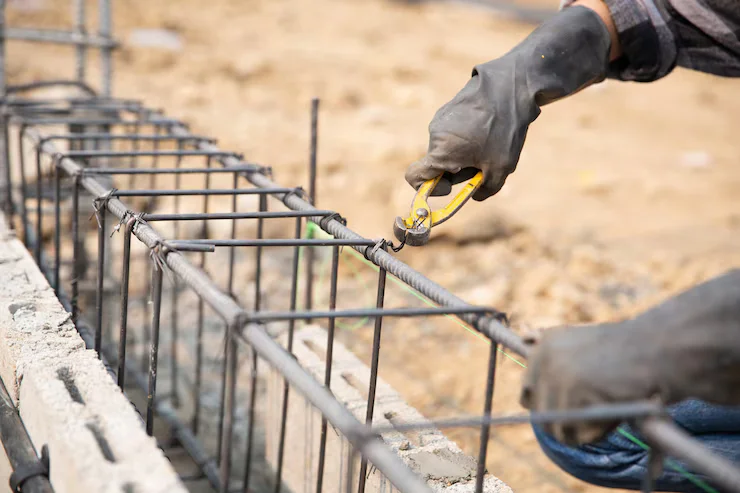When it comes to home stability, few things are more important than a solid foundation. If your home sits on a pier and beam foundation, understanding the signs of trouble and the solutions available can save you from costly repairs down the road of Beam Foundation Repair.
In this comprehensive guide, we dive deep into pier and beam foundation repair, giving you the knowledge you need to protect your home and your investment.
Understanding Pier and Beam Foundations
Before we jump into repairs, let’s cover the basics. A pier and beam foundation consists of:
- Vertical piers (often concrete, brick, or steel) that support the structure
- Horizontal wooden beams resting on the piers
- Crawl space beneath the home that allows access to plumbing, electrical, and HVAC systems
While pier and beam foundations offer many advantages, such as easier access for repairs and better ventilation, they are also vulnerable to certain issues over time, particularly due to soil movement and moisture.
Common Issues Pier and Beam Issues
Several factors can compromise the integrity of a pier and beam foundation, including:
- Soil Movement: Expansive clay soils can swell with moisture and shrink when dry, causing the foundation to shift.
- Moisture Intrusion: Water seepage can lead to wood rot and metal corrosion, weakening the entire structure.
- Poor Drainage: Inadequate water management around the home can cause water to pool beneath the foundation.
- Termite Infestations: Wooden beams are a prime target for termites, which can cause significant hidden damage.
- Aging Materials: Natural wear and tear over time can compromise the stability of the piers and beams.
- Poor Initial Construction: In some cases, improper installation can lead to early deterioration and uneven settling.
Signs You May Need Pier and Beam Repair
Catching foundation issues early is key to avoiding extensive and expensive repairs. Watch out for these warning signs:
- Uneven or sloping floors: Rooms feel tilted or bouncy.
- Cracks in interior or exterior walls: Horizontal, vertical, or stair-step cracks can all indicate movement.
- Doors and windows that stick or won’t close properly: Changes in the frame alignment can point to settling.
- Sagging or bouncy floors: Indicates weakened beams or joists.
- Gaps between walls and ceilings, or floors: Separation can suggest movement in the foundation.
- Visible damage in the crawl space: Look for sagging beams, moisture, or insect activity.
If you notice any of these symptoms, it’s wise to consult a foundation repair professional to conduct a thorough inspection.
Still curious? Check out these powerful guides that complement what you’ve just read.
The Repair Process
The approach to pier and beam repair depends on the extent and type of damage. Here are the most common solutions:
1. Shimming
- Involves inserting small wedges (shims) between beams and piers.
- Corrects minor settling and realigns floors.
- Quick and cost-effective for minimal damage.
2. Replacing or Sistering Beams
- Damaged beams are replaced entirely or reinforced with new beams attached alongside the old ones.
- Restores strength and stability to sagging floors.
- Requires expert carpentry and structural knowledge.
3. Pier Replacement or Addition
- Deteriorated or sunken piers are replaced with new ones.
- Additional piers may be installed to redistribute the home’s weight more evenly.
- Helps prevent future settlement issues.
4. Drainage Correction
- Proper drainage solutions include:
- French drains
- Sump pumps
- Gutter extensions
- Grading the yard away from the foundation
- Prevents future moisture buildup that can damage the structure.
5. Crawl Space Encapsulation
- Involves sealing the crawl space with a heavy-duty vapor barrier.
- Controls humidity and reduces the risk of rot, mold, and pests.
- It can significantly extend the lifespan of the foundation.
6. Termite Treatment
- If termites are present, professional extermination and wood treatment are necessary.
- Preventive measures like regular inspections and barrier treatments can help avoid infestations.
Cost of Pier and Beam Foundation Repair
The cost of repairing a pier and beam foundation can vary significantly based on several factors:
- Severity of Damage: Minor adjustments are cheaper than full replacements.
- Size and Layout of the Home: Larger homes require more materials and labor.
- Materials Used: The quality of wood, concrete, and support systems can affect costs.
- Labor and Equipment: Specialized tools and skilled labor impact pricing.
- Accessibility: Tight or obstructed crawl spaces may increase labor time.
Estimated Costs:
- Shimming: $300 – $1,000
- Beam Replacement: $1,500 – $4,000 per beam
- Pier Replacement: $1,000 – $3,000 per pier
- Full Foundation Overhaul: $5,000 – $20,000+
Always obtain multiple quotes from licensed contractors to ensure you’re receiving a fair and accurate estimate.
Why Professional Assessment is Crucial
Attempting DIY repairs for foundation issues can lead to:
- Misdiagnosing the problem
- Incomplete or temporary fixes
- Further damage to the home’s structure
- Safety hazards
Professional foundation repair specialists offer:
- Thorough inspections using advanced equipment
- Accurate diagnoses of underlying issues
- Customized repair plans that address your specific foundation concerns
- Compliance with local building codes and safety standards
Preventative Maintenance Tips
Consistent preventative maintenance can help you avoid the need for extensive pier and beam repair in the future. Here are some best practices:
- Maintain proper drainage:
- Clean gutters and downspouts regularly.
- Install downspout extensions to divert water away.
- Ensure the ground slopes away from your home.
- Monitor the crawl space:
- Check for moisture, standing water, and pest activity.
- Use a dehumidifier if necessary to control humidity.
- Inspect for plumbing leaks:
- Fix leaks promptly to prevent water from saturating the soil.
- Regular pest control:
- Schedule termite inspections and treatments as needed.
- Schedule professional inspections:
- Have your foundation inspected annually, especially if you live in an area prone to soil movement or heavy rainfall.
Conclusion
Pier and beam foundation repair is a critical aspect of maintaining the safety, comfort, and value of your home. Recognizing the early warning signs and taking prompt action can help prevent minor issues from escalating into major structural problems.
Whether you’re dealing with uneven floors, moisture issues, or aging materials, working with a qualified foundation repair specialist ensures that your pier and beam foundation gets the attention it needs to stand strong for years to come.
Ready for a deeper dive? Our most popular pieces live at 2A Magazine.
Sponsored Blog Post







